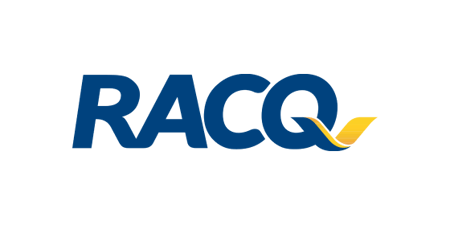
Client:Royal Automobile Club of Queensland (RACQ)
Industry:Insurance
Region:Asia Pacific & Japan
RACQ Gains Valuable 50K Hours of Added Capacity Through RPA

6 week
production timeline
60+
processes automated
180+
attended robots in production
50,000+ hrs
saved through automation increasing capacity in different departments
Client Overview
The Royal Automobile Club of Queensland (RACQ) delivers insurance, banking, and roadside assistance services to approximately 1.8 million members in Australia. Its leadership team believed Robotic Process Automation (RPA) could help streamline and accelerate each of its business lines, delivering better customer experience. But first, the organization would need to tailor the technology to its unique needs and requirements.
RACQ recognizes RPA’s great potential. Acknowledging the opportunities enabled through automation, in 2016, the Club’s Technology team began to investigate how and where it could invest in RPA for the benefit of its employees, and the lives of members across Queensland.
Initially, RACQ started small, launching a pilot program, leading to additional rollouts, and ultimately culminating into a multi-year initiative to leverage RPA across the entire organization. As one of the largest member-owned organizations in Queensland, Australia, with multiple revenue-generating businesses including banking, insurance, and assistance services, RACQ stood to benefit from RPA.
That doesn’t mean the organization seamlessly incorporated RPA without any obstacles, of course. RACQ’s bold automation agenda had plenty of bumps in the road that threatened, but it stayed the course, and incorporated learnings to realize the full potential of this technology.
We had been on our automation journey for about two years, primarily using unattended bots for back-office automation across RACQ. We then started exploring how attended bots can be used across our other business divisions including contact centers.
Kris Watt • Manager of Innovation and Automation, Royal Automobile Club of Queensland
Early missteps spark RPA inspiration
Some RPA success stories are like boring arthouse films: they lack any tension or obstacles to overcome, and characters stumble toward a resolution without much—if any—resistance.
This isn't one of those stories.
While RACQ’s first foray into automation certainly wasn’t a disaster, Kris Watt, Manager of Innovation and Automation, said it also wasn’t anything “to hang its hat on”. The six-week pilot created a proof of concept, but the software robots themselves weren't ever put into production. Project leaders could see RPA's potential, but didn't have the tangible results to back up their vision.
The opportunity presented itself out of RACQ's insurance division. The organization wanted to reduce member wait times with its fledgling Claims Transformation Program. Watt and other automation supporters knew this was their chance to show everyone exactly what RPA could do.
In preparation for their first deployment, RACQ partnered with Blackbook.ai, who introduced them to UiPath. Without a dedicated automation team in place, RACQ put together a makeshift center of excellence to support RPA development and production. The business improvement department, including Automation Technical Lead Nick Rosenthal, collaborated closely with RACQ’s innovation and tech staff to identify the best candidates for automation.
They started with the most visible processes that could show easy ROI. High-volume, repetitive tasks that required a lot of time-consuming manual work were the most obvious places to start.
One of the first processes to be automated was part of RACQ’s insurance fulfillment workflow. Roughly 30% of insurance fulfillment transactions slowed because of inaccurate or missing information, among other data input issues. These transaction issues triggered re-key processes, which required staff members to fill out fields with the correct information manually.
Software robots could automate that entire process, removing a huge chunk of manual work—not to mention a massive headache—for staff members.
"We were able to identify that one of the processes was low complexity from an automation development end and was a decent ROI for the business. It was the magic opportunity – high return for low effort,” said Rosenthal.
Having the business improvement department onboard also helped drive change management within the organization. Like many other RPA newcomers, RACQ met resistance from some skeptical employees who viewed automation as a threat to their jobs. In some cases, staff members believed the software robots were physical machines that would take their place. Clearly, change management stakeholders had their work cut out for them.
Undeterred, they aggressively championed RPA, holding demonstrations, soliciting suggestions to name software bots, and showing staff exactly how the technology worked. The overarching message: RPA is here to help you, not replace you.
It’s not about taking your job. It’s more about helping you to do better, helping you do your job better.
Kris Watt • Manager of Innovation and Automation, Royal Automobile Club of Queensland
Finding the right fit with RPA
Any business can benefit from RPA, but that doesn’t mean every approach is right for all businesses. In RACQ’s case, stakeholders needed to customize and refine different aspects of the RPA program to address the organization’s needs. For one, they had to rethink their approach to project management, software development, and product rollout. The teams at RACQ wound up building tailored frameworks to develop bots and bring them to production while minimizing costs.
They also built custom frameworks to help measure the individual performance of each virtual robot and show line-of-business leaders how RPA has benefited their departments. As a result, business units can see precisely how much time and labor RPA saves their team daily.
“It’s about getting the right balance and identifying the next priority - more complex things with overall benefits and real time analytical checking,” said Watt.
RPA had become an integral fixture of RACQ's various business lines—a fact that became painfully clear when the organization was forced to temporarily take a bot out of production to adjust for a change made by a vendor.
With RPA shouldering 50,000+ hours of work, RACQ has freed up staff to take on more stimulating and strategic tasks.
And that’s just the beginning.
RACQ plans to increase the number of attended robots in its RPA strategy and expand automation’s reach into more complex workflows like contact centers.
With a solid RPA foundation set, it’s also looking to branch out into the sophisticated applications of RPA that take advantage of artificial intelligence and cognitive automation.
It might have been a rocky road, but RACQ’s RPA journey has found its destination.
As we grow and we learn more, we're building better and smarter.
Kris Watt • Manager of Innovation and Automation, Royal Automobile Club of Queensland
Related case studies
Ready for your own case study?
Speak to our team of knowledgeable experts and learn how you can benefit from agentic automation.





